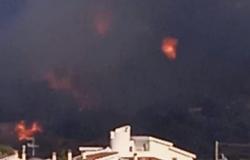According to the first estimate released by Coldiretti and Cai – Consorzi Agrari d’Italia one month from the start of threshing, «The production of durum wheat will fall below 3.5 million tonnes this year (risking being remembered as the lowest of the last 10 years) due to the reduction in cultivated areas, caused by unfair competition from foreign products, and the drought that hit the regions of Southern Italy. The cultivated areas for durum wheat have reduced by 11% compared to the previous year, falling below 1.2 million hectares – state Coldiretti and Cai – with peaks of 17% in the areas of Central and Southern Italy, where it comes from approximately 90% of the national harvest.”
Slight increase (+1.4%) for the areas cultivated with soft wheat, which stand at just over 600 thousand hectares, for an estimated production of around 3 million tonnes. 8% drop in barley cultivation land.
Coldiretti tries to combine the decline in production due to the climate with the continuation of the campaign against the importation of wheat from abroad and once again denounces that «Unfair competition from abroad. It is the effect primarily of the collapse in prices caused precisely at the time of sowing by the invasion of foreign products. In 2023, almost 900 million kilos of Russian and Turkish wheat arrived, an invasion never recorded in the history of our country, according to the analysis of the Divulga Study Center. A veritable river of product which, added to that of Canadian wheat, which has now exceeded one billion kilos, has had an impact on the prices of national wheat. Furthermore, as in the case of Canada, it is a cereal treated before harvesting with glyphosate, a method prohibited in our country. Added to the foreign competition – say Coldiretti and Cai – are the effects of the climate with the drought which has reduced the production of durum wheat in Puglia with drops of between 20 and 30%, while in some areas of Sicily it even reaches – 70%”.
The controversy against the import of agricultural food products and those falsely labeled risks being “slippery” and exposing oneself to reprisals in a country that prides itself on exporting a large part of its Made in Italy food and wine products and which is among the major drug dealers of falsified “doc” products in the world, but finds solid political support, starting with Minister Lollobrigida who supports it with his sometimes picturesque declarations.
However, it is certainly true that farmers are victims of market price fluctuations and to protect them, Consorzi Agrari d’Italia has implemented supply chain contracts and futures on wheat, as well as important investments in research.
A region that symbolizes the impact of climate change on durum wheat is Tuscany with downward estimates for the production of durum wheat which should reduce by 20% this year, but with differences, even substantial, between the southern part, Maremma, Arezzo and Livorno in particular, where expectations are for higher yields, and the northern part, Pisa, Lucca and Pistoia where, on the contrary, the abundant rainfall between November and December made it difficult to respect the sowing programs with farmers now aiming to recover lost ground with spring varieties such as sunflower, soybean, corn and sorghum.
Coldiretti Toscana underlines that «The exploit of the past cereal year with the increase in cultivated areas (+6%) after a long period of progressive reductions, 10 thousand hectares less in a five-year period, had given rise to hopes for a revival of the regional granary also on the strong push of supply chain contracts which guarantee safe prices to farmers. But once again the climate cut off the “legs”.
Fabio Lombardi, director of the Tirreno Agricultural Consortium, confirms: «We expect good yields in the band from Livorno to Maremma which were not affected by the persistent rains between October and December which made it impossible to work the land in the northern part of the region and sow them. – Compared to last year, the climatic events were reversed: sowing had taken place on time but what ruined everything was the rain between May and June which had lowered yields and favored the development of plant diseases. In recent years, climate change has had a decisive role in the programs of farmers who have also had to deal with skyrocketing production costs.”
And Tuscany is also accused of the invasion of foreign wheat. According to Letizia Cesani, president of Coldiretti Toscana, «We need to work together to demand from the next EU parliament a label of origin for all community food products and say enough to unfair competition by decisively introducing the principle of reciprocity to ensure that all products enter the Union respect the same standards from an environmental, health and labor standards point of view as foreseen in the internal market also in light of the free trade agreements under discussion. Wheat is a driver product of the pasta supply chain, a food that is essential for us Italians on our tables, which we must return to producing by recognizing a fair price for our farmers which must never be below production costs as required by law. against the unfair practices desired by us”.
For Coldiretti the model to follow is that of the agreement signed in 2019 between the Italian Agricultural Supply Chain and the Pastificio Fabianelli of Castiglione Fiorentino (AR) for the production of 100% Tuscan pasta which ensures farmers a guaranteed minimum price which is always at above production costs. And recently the one signed with the historic Pastificio Chelucci of Pistoia which enhances Made in Maremma wheat.



